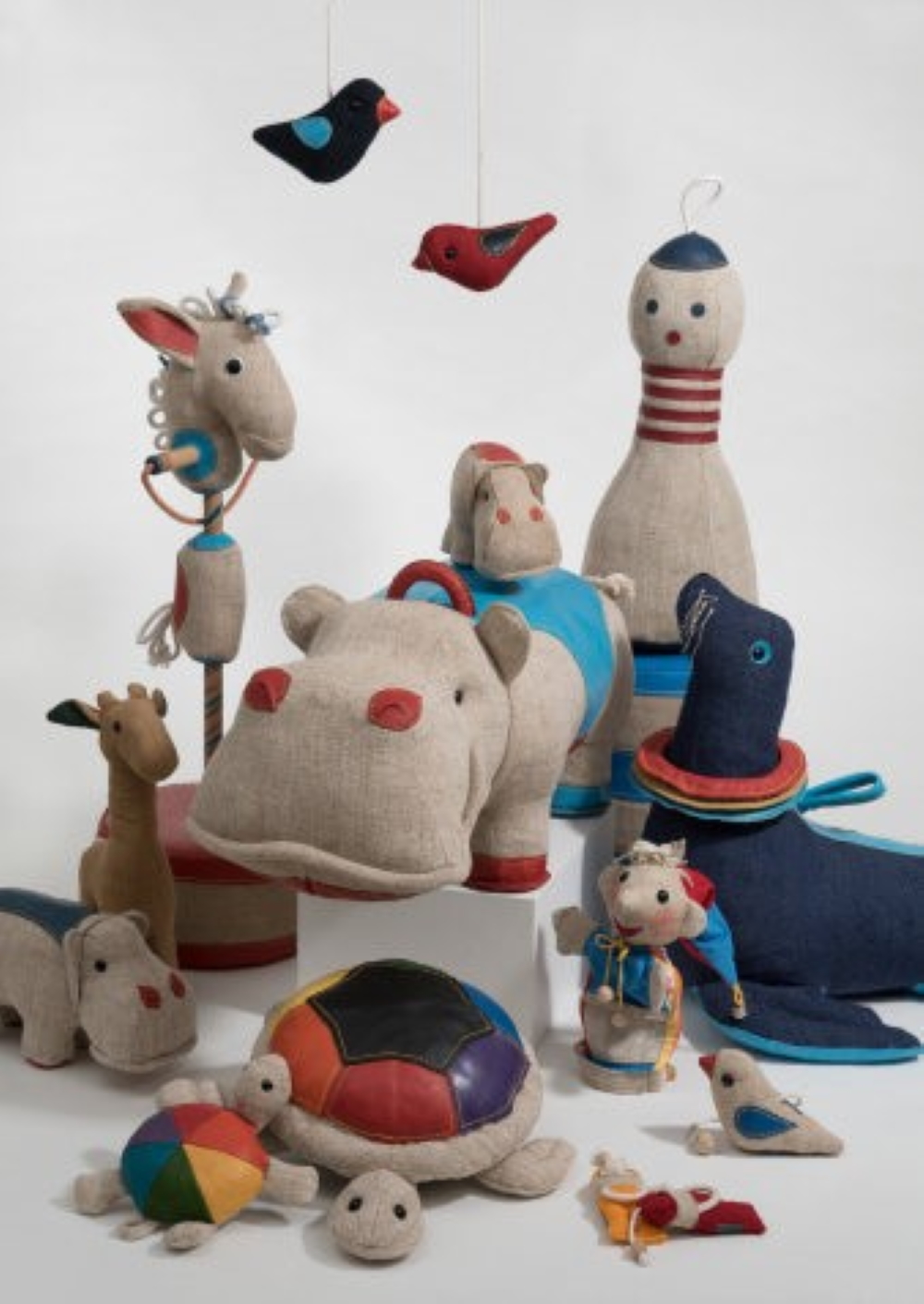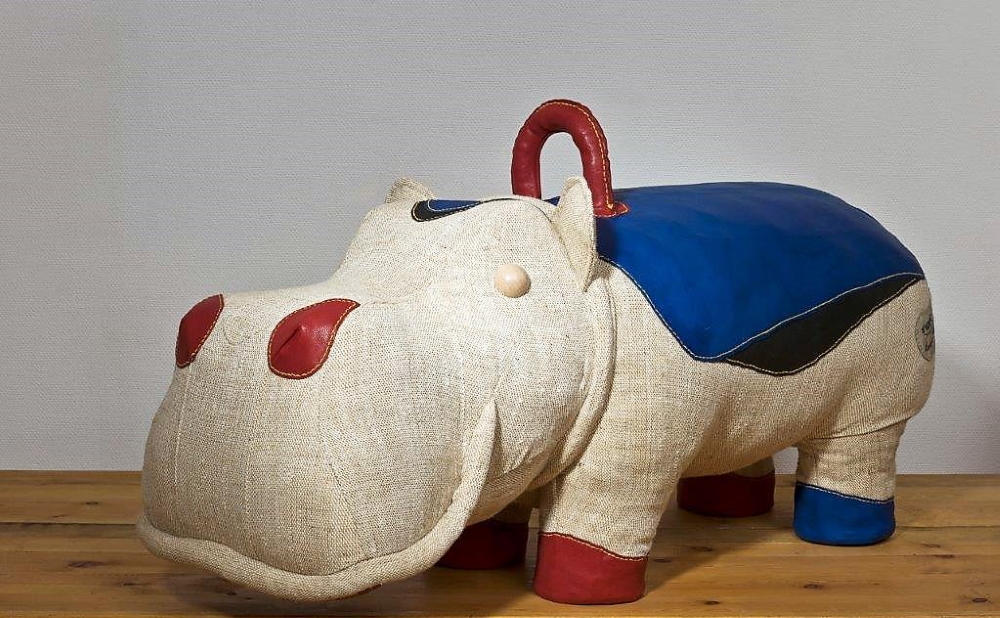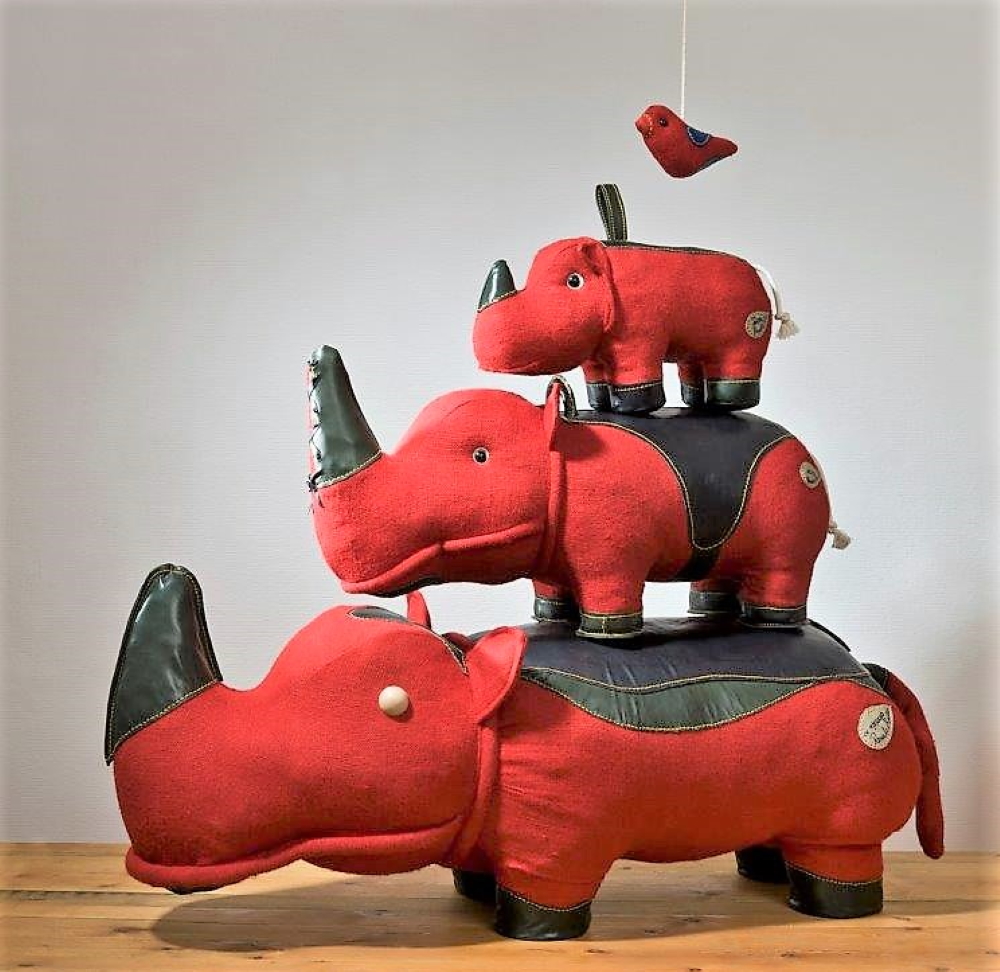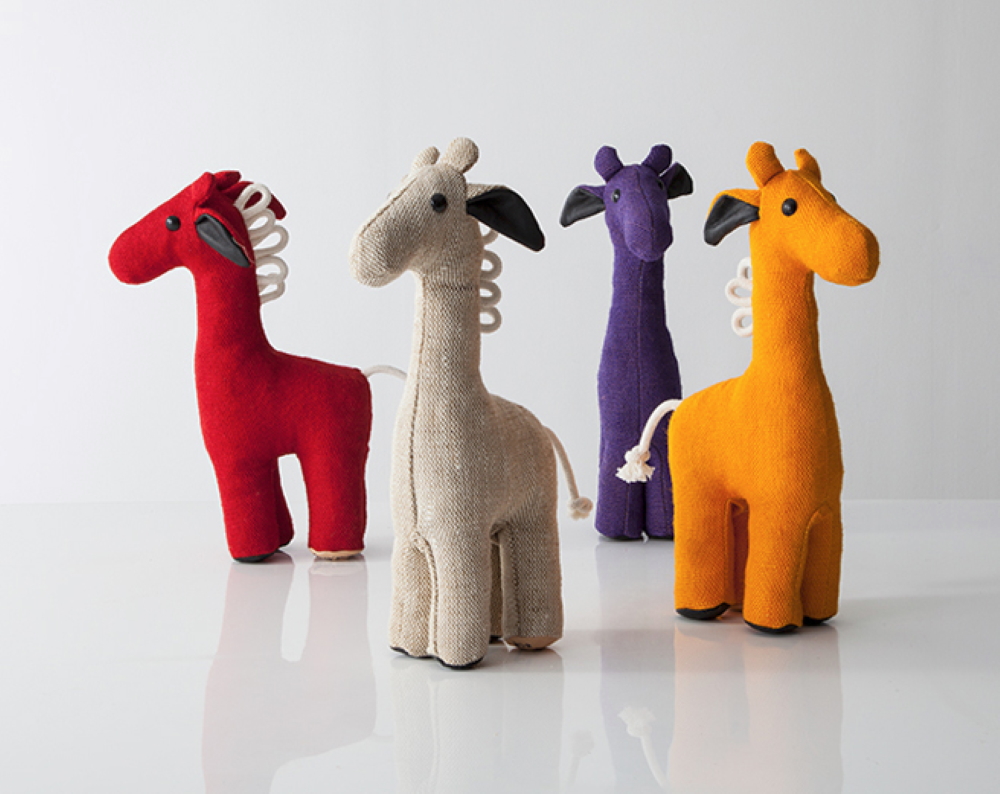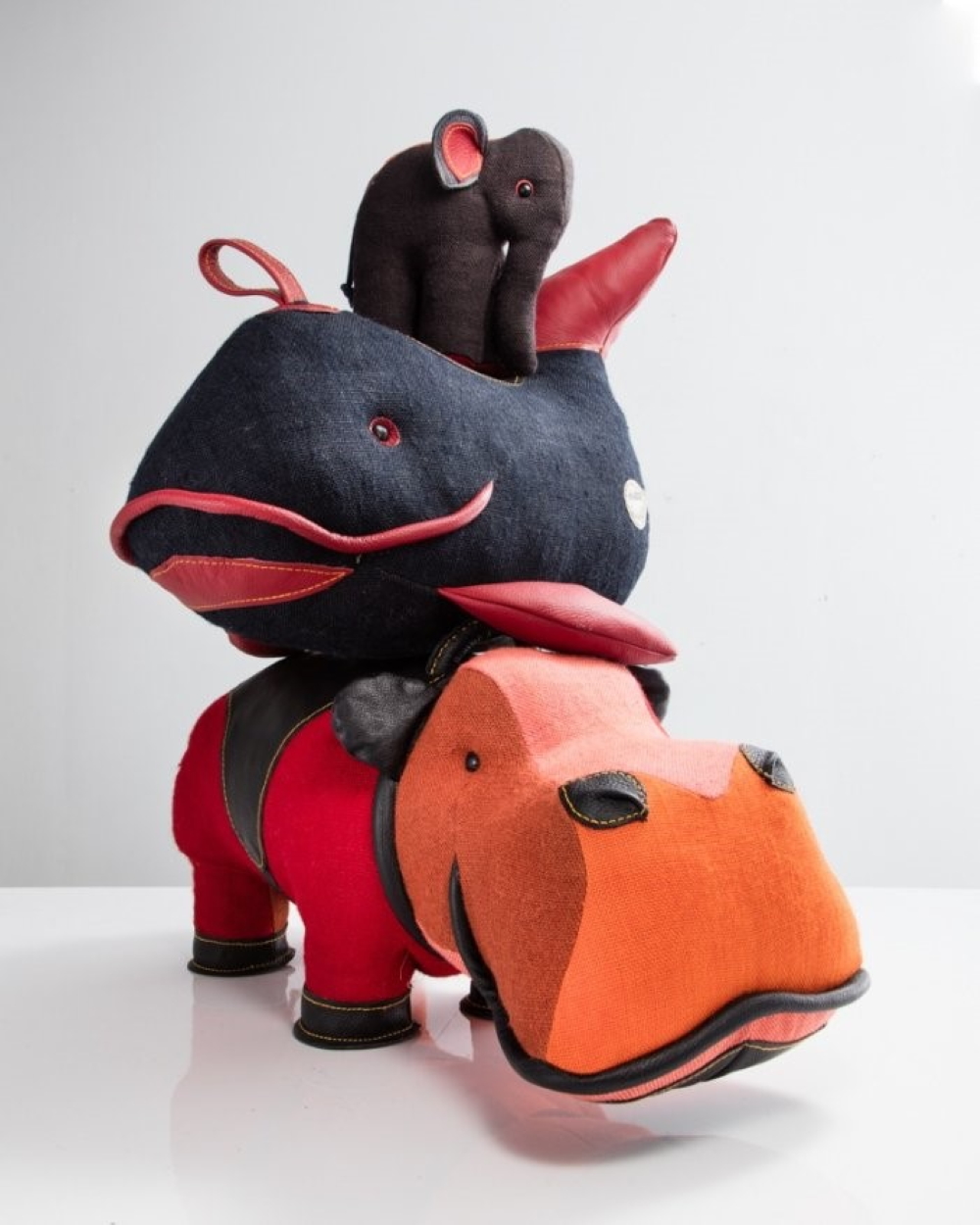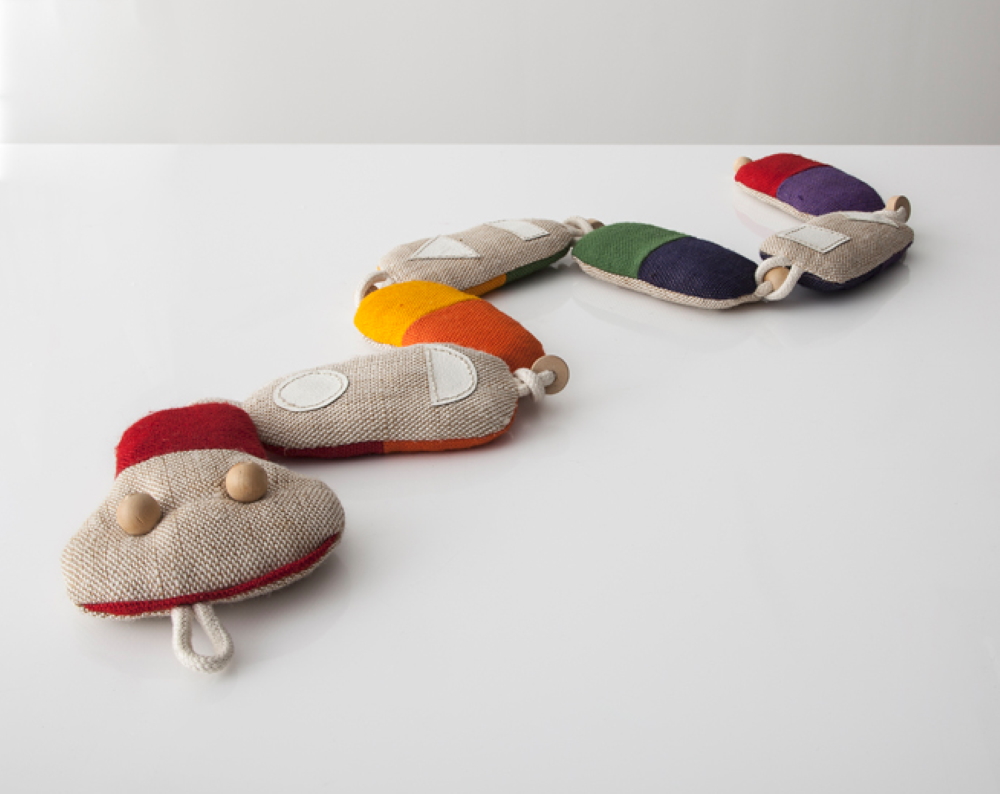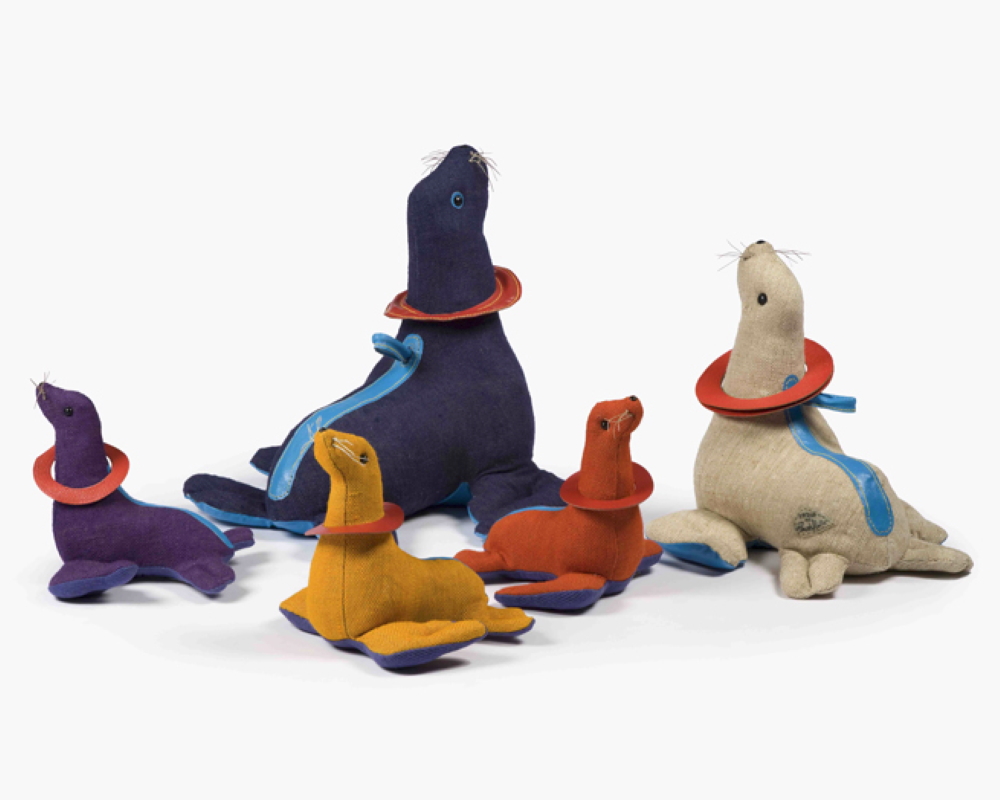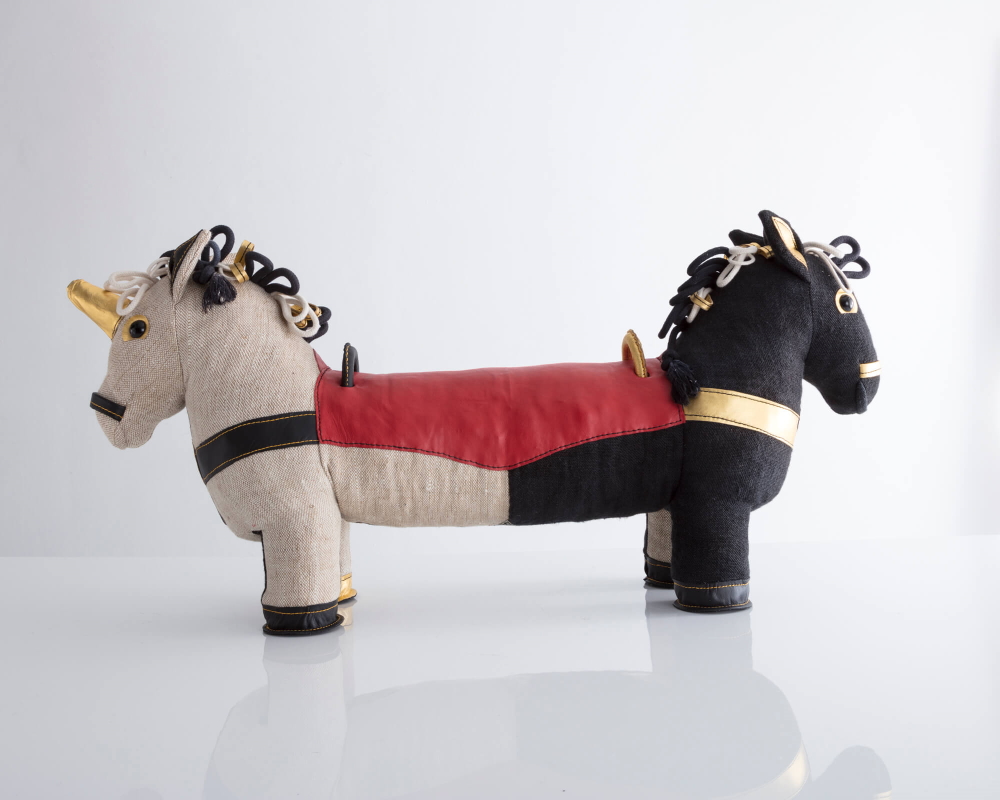Renate Mueller
toy designer / producer
Germany
Extremely astonishing and unusual is the path that a colourful herd of animals has taken: from a small town in East Germany to New York - first to the renowned gallery 'R20th Century Gallery' (now 'R & Company') in Manhattan and later to one of the most famous museums in the world, the 'Museum of Modern Art' (MoMa). And that's not all: all of the exclusively handmade creations, which are actually unique therapeutic children's toys, have long since achieved the status of unique design objects - and won many awards. They are highly sought-after, high-priced collector's items in the Big Apple and worldwide. The maker is also the last of her kind!
Renate Mueller
toy designer / producer
Germany
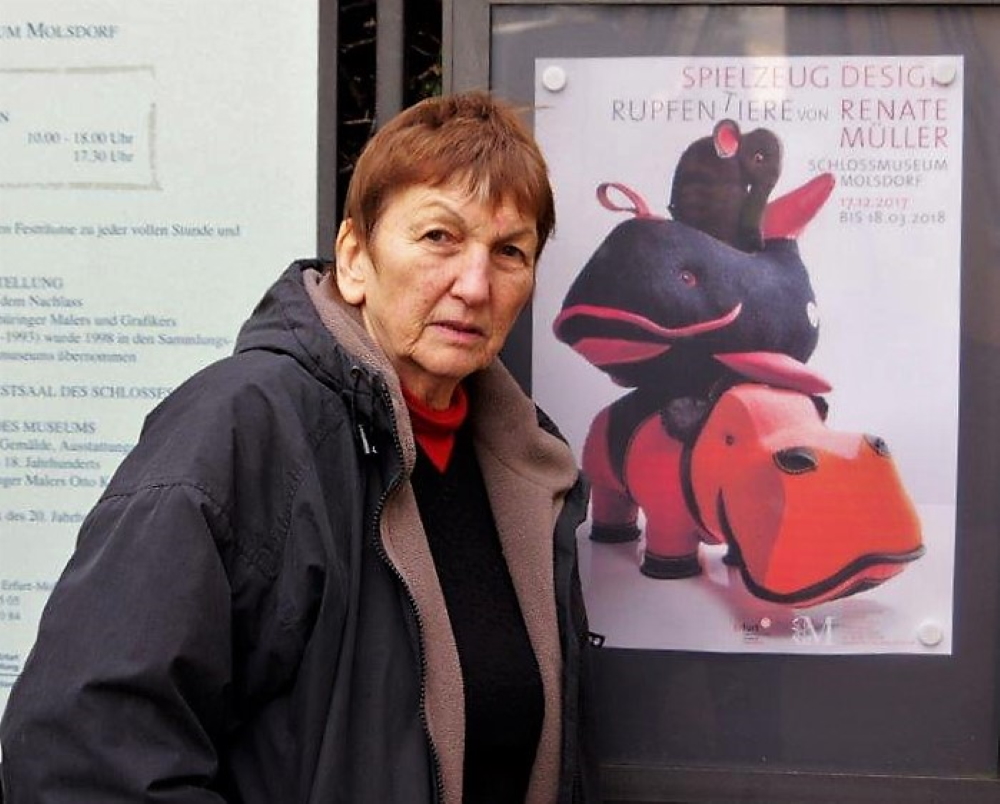
Her products - the giant hippopotamus or the large rhinoceros - are world famous. However, the name of the woman who designs and makes the figures as well as many others is known to only a few. Renate Mueller is the name of the "mother" of the, in her own words, "critters". Because of their outer skin, a robust, extremely durable rayon/jute mixture, they are called "plucked animals". Because of its texture, this rare plant fibre fabric is very suitable for touching, feeling and grasping, and is also very hard-wearing, making it ideal for use in the therapeutic field. The coarse fabric is in stark contrast to that used for the toys produced in the toy manufactory 'H. Josef Leven KG'. It was taken over from her grandfather in the 1930s and later on run by her parents. Due to her family background and a life in Sonneberg (South-Thuringia), a town with 23,000 inhabitants, where 20 percent of the world's toys were manufactured in the 20th century, Mrs. Mueller (* 24 October 1945) decided to study toy design at the technical school for toys in Sonneberg after graduating from high school and becoming a skilled bricklayer. There, at the beginning of the 1960s, students created the first plucked objects (rhinoceros, duck, small cube) at the suggestion of the Bauhaus-influenced lecturer Helene Hauesler, who liked simple shapes and natural materials. After completing her studies and starting work in her home business, Renate Mueller's father acquired the rights to the aforementioned "original models". The first three of her objects, which were ready for series production, were offered at the Leipzig trade fairs in 1967/68 with the slogan "Rau aber herzlich" (rough but hearty). Five years later, her parents' company was nationalised in the GDR. By then, an extensive collection of therapeutic play objects had been created, almost all of which went to kindergartens, hospitals, institutions for the disabled and to export. Renate Mueller also lost the trademark rights to her figures with the expropriation, although the 'VEB sonni' continued to produce them until 1989. She resigned and in 1978 became a member of the Artists' Association of the GDR with newly designed burlap objects. Until 1990 she worked as a freelance artist in her own workshop, designed and built 17 playgrounds, and was a member of the working group 'Kindumwelt' in the VBK/GDR. After the fall of the Wall, Renate Mueller bought back all rights to her burlap assortment from the Treuhand in 1990. The new start was difficult. Success was a long time coming.
In 1991, the down-to-earth woman founded the design studio 'Renate Mueller, Spielzeug (toys) + Design' in her home town. Two years later her product range caused a sensation at the ‚International Toy Fair' in Nuremberg. In the focus: her extraordinary toys - the 'critters', of course. Above all, a Japanese special educator and retailer was enthusiastic because he had already been working in Japanese children's institutions with burlap animals 'Made in Germany' in the 1980s - without knowing who they came from. This was followed by more than 17 years of cooperation with the Asian customer. Furthermore there was a very creative collaboration with the artist Bernd Rückert to design many children's facilities, children's clinics practices and art in public spaces.
The great demand from doctors, gallery owners and art collectors is not surprising. In view of the flood of inferior (plastic) products from China with minimal durability, such creations are an exception.
Despite her presence in New York in the form of three solo exhibitions, a room-sized play installation at the 'Art & Design' Miami/Basel 2015 and the fact that two carpets designed by her were on display at the '15th Biennale' 2016 in Venice, Renate Mueller does not see herself as an artist. "Only perfection in craftsmanship leads to artistic success," she told the 'Leipziger Volkszeitung', and then adding: "And it takes good ideas." Mindful of this, "this pioneer in the field of therapeutic toys" (formost.de) has meanwhile created numerous and diverse, always multifunctional animal and play objects, each with its own therapeutic consideration behind it. It is therefore not surprising that Renate Mueller was selected as one of 25 East German designers for the exhibition project 'German/German Design 1949 - 1989, Two Countries - One History'.
Bringing the plucked animals into the world is exhausting manual labour. And not only for a double-headed hippo in sofa format or the elephant in rocking horse size, but every time. Old, long darning irons are needed to press wood wool into the bodies made of stiff burlap according to individual patterns, to fill them to the last corner, to model the final shape. Only then can they be sewn shut with massive needles. Appliqués made of leather in the basic colours form colourful accents at the stress points. The completion of a piece can sometimes take up to a month.
Whereas the individual pieces used to cost low two- to three-figure sums (in Ostmark!), nowadays they are traded for higher four-figure sums (in euros or dollars).
The future of Renate Mueller's 'Noah's Ark' in her own house is finite, because there are no successors. In the portrait of the radio station 'Deutschlandfunkkultur', she referred to a statement that also appears in the 77-page book 'Toys + Design' on her career and work, written by the New York gallery owners mentioned at the beginning: "This is my artistic handwriting, and I don't want to let it be distorted by strangers.
If one day Renate Mueller's animal offspring dies out, her works are not to be sold off lucratively abroad. She immediately turned down an offer to that effect. "The New Yorkers would take over my entire estate. But what would that do in New York? It stays in Sonneberg and goes to the (German Toy) Museum!"
Interview October 2022
Miracles happen: hippo in the Museum of Modern Art in New York
The following are my "thoughts" on your questionnaire. I have deliberately written „thoughts“ because I believe there can be no simple answers to such complex questions. I can only present these from my point of view.
INTUITION
As a creative "human being" one is always receptive, even if unconsciously, to new thoughts that arise from the daily environment in general or in the context of concrete design tasks and goals.
It is an omnipresent feeling - and suddenly so-called "flashes of thought" appear to the topic that is currently occupying me. I register the information, sort it out or develop it further in the direction of the goal. In this way I optimise them mentally before I continue to work - for example, in drawing and/or in practice.
In the course of my many years of design work with practical/objective solutions, I also benefit from my wealth of experience as well as my theoretical knowledge and practical skills.
Of course, I also think "outside the box", get into "dead ends" - but ultimately arrive at the desirable result.
The drawing is the preliminary stage for the practical implementation, such as the pattern design. The "one-to-one pattern production" then leads to the design result.
Intuition is a matter of the heart for me.
INSPIRATION
As a toy designer, intuition and inspiration are omnipresent and inseparable.
In contrast to my freelance artistic work as a designer I have the task of creating aesthetically and functionally high-quality as well as educationally and therapeutically valuable play objects that can also be reproduced. Every inspiration for new tasks always means a mental and physical feat of strength during realisation.
In my case, the experiences from my studies, many years of practice, contacts and encounters with children, educators, therapists and the exchange with fellow artists were and are the source of unique design solutions - in other words, the source of my inspiration.
For me, inspiration also always means the desire and joy of creative work.
CREATIVITY
From my point of view, the above-mentioned criteria are inconceivable without a certain "innate" creativity shaped and encouraged by the parental home.
These criteria are not to be seen in general but in relation to time. I am referring to the times when I worked as a toy designer in my parents' company and shortly after nationalisation in the state-owned enterprise (VEB) "sonni", as a freelance artisan in the artists' association of the GDR until the fall of communism.
Especially in the field of design, a certain material and informal lack led to a special creativity and flexibility ("Only in limitation does the master show himself..." - Goethe).
My creativity was certainly also influenced by product design for the next trade fair to ensure sales success, but also by the idea and execution of unique pieces and play structures, in the context of my teaching activities as well as in joint projects in the working group "KindUmwelt", in work for children's institutions in Japan or for exhibitions at home and abroad up to personal exhibitions in a New York gallery.
In all this diverse activity as a designer, creativity is also influenced by many objective and subjective conditions. Interdisciplinary teamwork is important and brings new perspectives and goal-oriented results.
As a freelance designer, personal responsibility is particularly great when you want to create something unique.
For me, my own creativity is always linked to awakening the creativity of the target groups such as children, students, families, educators/therapists et cetera, in dealing with my play objects.
In other words, my creativity is the product of a mutual give and take.
SUCCESS
Due to the success and timelessness of many of my ideas and models, it is a matter of course for me to use them again and also to change them based on this.
After such a long successful creative period as a toy designer, my work has also gained international recognition because I have remained true to my design ideals. This could be summarised as follows: Ideas, quality, uniqueness, usefulness, sustainability, honesty. Commercial success has never been a primary criterion for me.
MY FAVORITE WORK:
I love all my work from over 50 years of activity: be it the countless stuffed animals and textile dolls from the early days, the numerous unique pieces in the form of playgrounds, the works for urban and play space design, designs for play carpets for the Venice Biennale as well as the range of "therapeutic toys" - from the small play bird to the so-called XXL plucked hippo.
The fact that works of mine were selected for the exhibitions "Century of the Child" 2012 at MoMA and "German-German Design 1949 to 1989 / two countries - one history" is a special recognition for me.
I hope that through my work and the many worldwide contacts I have made, I've made a small contribution and provided an impetus for timeless design in my creative field.
